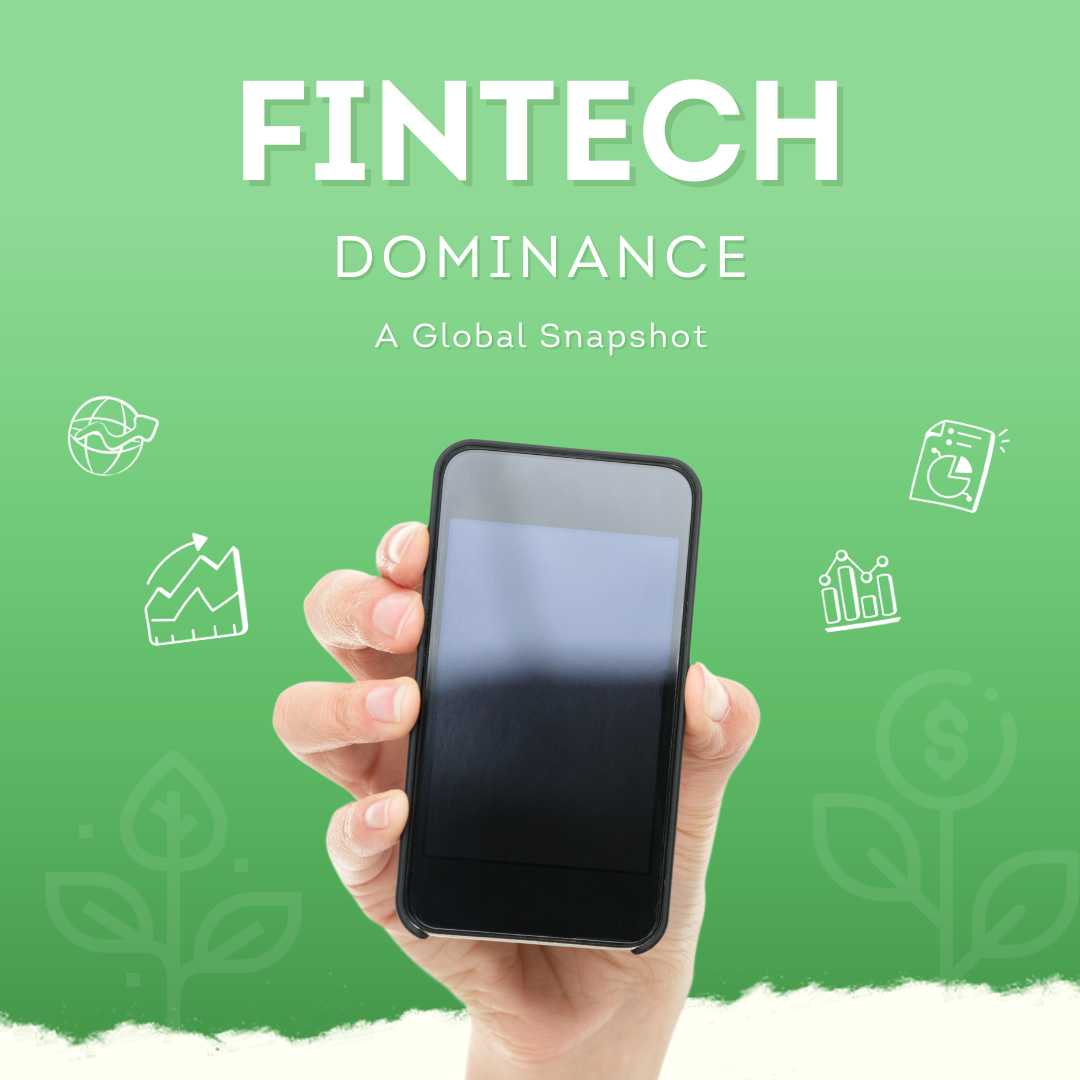Dressed in his signature hoodie or not, Mark Zuckerberg just made a statement in pinstripes. By inviting Patrick Collison – the co-founder and CEO of $95 billion fintech giant Stripe – onto Meta’s board of directors, Zuckerberg isn’t just filling a seat. He’s telegraphing that Meta Platforms (the company behind Facebook, Instagram, and WhatsApp) is gearing up for a new chapter in financial technology. The timing is intriguing: Meta is fresh off a string of fintech misfires and faces intense regulatory scrutiny on multiple fronts. Collison’s appointment comes at a moment when social media and finance are converging like never before, and it could mark a turning point in how Big Tech tackles payments and digital money. Why does this board appointment matter now? Because it signals that Meta’s grand fintech ambitions – once derailed – may be back on track, this time with one of Silicon Valley’s top payments innovators riding shotgun.

Table of Contents
ToggleMeta’s Rocky Road in Fintech: From Libra to Meta Pay
Meta’s interest in finance isn’t new. Back in 2019, when the company was still called Facebook, it unveiled Libra – an ambitious global cryptocurrency project that aimed to reinvent money on a worldwide scale. Libra (later rebranded as Diem) was a permissioned blockchain-based stablecoin backed by a consortium of companies. Almost immediately, it met with fierce backlash from regulators who feared a private tech-issued currency could undermine monetary sovereignty and user privacy. Under unrelenting regulatory pressure, the project was continually scaled back and delayed. By early 2022, Facebook (now Meta) effectively killed the project, shutting down Diem and selling off its technology. Its digital wallet companion, Novi, fared no better – launched as a limited pilot for remittances, Novi never expanded beyond small trials and was shuttered by September 2022, officially ending Meta’s stablecoin saga.
After the crypto gambit collapsed, Meta pivoted to more conventional fintech plays. It had long offered payment features inside its apps – remember Facebook Pay, launched in 2019 to let users send money or buy products across Facebook, Messenger, Instagram, and WhatsApp? In 2022, as part of Meta’s rebranding and “metaverse” vision, Facebook Pay was renamed Meta Pay, with Zuckerberg describing it as a step toward a universal digital wallet for both Web2 and Web3 experiences. The functionality for users remained familiar (storing credit cards, transferring money, making purchases in-app), but the rebrand signaled Meta’s intent to knit payments into its future platforms. “In the future there will be all sorts of digital items you might want to create or buy… Ideally, you should be able to sign into any metaverse experience and have everything you’ve bought right there,” Zuckerberg explained at the time. In other words, Meta Pay was envisioned as the wallet of the metaverse – managing identity, virtual goods, and payments across immersive experiences – though that vision is still largely aspirational.
Meta also explored fintech on its hugely popular messaging services. WhatsApp Pay rolled out in markets like India and Brazil, enabling peer-to-peer payments via the chat interface. Uptake was slow and hurdles high, especially in India where regulators initially capped WhatsApp Pay’s user base to limit its growth. It took until late 2024 for India’s payments authority to finally lift the cap, allowing WhatsApp to offer its UPI payment service to all 500+ million users in the country. That unlocked a vast new market overnight, albeit one where entrenched rivals like Google Pay and PhonePe already dominate. WhatsApp’s payments expansion has been cautious, country-by-country, tied to local banking systems – a far cry from the global scale Libra had aspired to. Meanwhile, Meta enabled credit card payments for businesses on WhatsApp in some regions. In Singapore, for instance, Meta partnered with Stripe in 2023 to let small businesses accept payments directly in WhatsApp chats, using Stripe’s infrastructure to process credit cards and the local PayNow real-time network. This gave a glimpse of how Meta could leverage existing fintech rails to facilitate commerce on its platforms, without reinventing the wheel.
Through these twists and turns – from a bold attempt to create a new global currency, to retooling its own wallet, to embedding payments in chats – Meta has sent a consistent message: it sees finance as core to its future. Yet so far, the tangible results have been modest. In 2022, the company’s “Payments and Other” revenue was just $808 million – less than 1% of Meta’s $117 billion total revenue – underscoring how little of its business comes from fintech today. Meta remains overwhelmingly dependent on advertising dollars. But the company’s leadership clearly hasn’t given up on the idea that its social networks and messaging apps, used by billions, could also become venues for shopping, remittances, banking, and more. The appointment of Patrick Collison to Meta’s board is a strong sign that Meta is gearing up to reignite its fintech ambitions, this time with seasoned guidance to avoid past pitfalls.
Enter Patrick Collison: Stripe’s Chief and Fintech Visionary
Patrick Collison’s ticket to Meta’s boardroom brings a wealth of fintech expertise to a company that could use exactly that. Collison, now 34, co-founded Stripe in 2010 with his brother John and built it into one of the world’s most valuable private fintech firms. Stripe’s core product – easy-to-use software tools for online payments – became the lifeblood for millions of internet businesses. From tiny startups to Fortune 500 companies, Stripe powers e-commerce checkouts, subscription billing, and digital marketplaces across the web. The company has expanded to 50 countries and is integrated into over 1.5 million active websites worldwide. In short, Stripe is everywhere behind the scenes of the digital economy.
Collison’s accomplishments at Stripe are staggering. The platform processed $1.4 trillion in payment volume in 2024, up 38% from the prior year – an amount equivalent to about 1.3% of global GDP. That means roughly one out of every 80 dollars generated in the world economy now flows through Stripe’s pipes. By early 2025, investors valued Stripe around $91.5 billion, not far off its peak $95 billion valuation, despite the broader fintech downturn. Unlike many fintechs, Stripe is profitable and still growing fast, with the Collison brothers recently noting that even after a decade, the “transformation is still early” as more commerce moves online. Stripe’s scale and stability have made Patrick Collison a trusted figure in tech and finance – someone who understands both the cutting-edge of payments technology and the grind of compliance and regulations in a heavily supervised industry.
What exactly does Collison bring to Meta’s table? For one, credibility in fintech and a deep rolodex of industry connections. Stripe sits at the intersection of startups, big enterprises, banks, and regulators worldwide. Collison has navigated complex issues like global licensing, anti-fraud measures, and digital identity verification – all highly relevant to Meta’s own challenges if it expands further into payments. He’s well-versed in payment networks (Visa, Mastercard, et al.), alternative payment methods, and even cryptocurrency: Stripe dipped its toe back into crypto in recent years by enabling stablecoin payouts and crypto on-ramps within the bounds of regulation. Collison is often lauded for his strategic vision; he’s someone who thinks in terms of infrastructure and enabling platforms. That mindset aligns with Meta’s needs if the company wants to turn its massive user base into a fintech ecosystem. Rather than launching another doomed standalone product, Meta could integrate financial services in a way that amplifies the core social platforms – a strategy Collison has effectively executed at Stripe by making finance “programmable” for developers.
Collison also brings an entrepreneurial and global perspective to Meta’s board. Born in Ireland, he’s built Stripe into a global company with dual headquarters in San Francisco and Dublin. He’s intimately familiar with the needs of small and medium-sized businesses (SMBs) online, which is key – SMBs make up a huge portion of Meta’s advertisers and merchants. “Between WhatsApp, Instagram and Facebook, Meta is one of the internet’s most important platforms for businesses,” Collison noted in Meta’s announcement, highlighting how he views the company’s reach to merchants and entrepreneurs. Indeed, both he and fellow new board appointee Dina Powell McCormick have extensive experience serving SMBs (Powell led Goldman Sachs’s 10,000 Small Businesses program). Collison’s presence may ensure Meta’s decisions consider the little guys – the millions of small merchants and creators using its apps – and how to help them transact and grow. It’s a perspective that dovetails with Zuckerberg’s own current mantra of fueling economic opportunity on Meta’s platforms.
Not least, Collison is a peer and friend to many tech leaders. He already had ties to Meta: he served on a Meta advisory council in recent years, providing guidance on technology and product development (reportedly even advising on Meta’s AI strategy). This means he’s no stranger to Zuckerberg and Meta’s top brass. Having a sitting Silicon Valley CEO on the board also adds a dose of operational savvy – someone who is actively running a large tech company and dealing with day-to-day competitive pressures. Collison can bring insights from the broader fintech landscape (where “buy now, pay later,” digital wallets, and real-time payments are hot topics) and perhaps help Meta spot partnership or acquisition opportunities early. And with Stripe rumored to be eyeing an IPO in the next year or two, Collison will gain experience in public-company governance through Meta’s board, which could pay dividends for Stripe’s own journey. In short, Collison bridges the worlds of Big Tech and fintech – exactly the kind of bridge Meta may need as it ventures deeper into financial services.

Stripe + Meta: What Could the Collaboration Look Like?
With Collison in the boardroom, it’s tantalizing to imagine how Meta and Stripe might team up in the coming years. There is no official partnership announced (Collison’s board role doesn’t automatically mean Stripe and Meta will ink deals), and yet the possibilities are many – and plausible. Both companies could benefit significantly from closer integration of their products. Here are a few scenarios industry observers are buzzing about:
- Seamless Social Commerce: Meta has been striving to turn its social apps into shopping destinations – think Instagram storefronts, Facebook Marketplace, live shopping streams, and in-chat purchasing on WhatsApp. Stripe, as a dominant payments processor, could power a frictionless checkout experience across all these Meta properties. We’ve already seen a hint of this in Singapore, where Stripe is handling payments within WhatsApp. Imagine that model rolled out globally: A small business could list products on Instagram or WhatsApp, a customer taps “Buy,” and behind the scenes Stripe processes the card or digital wallet payment without the user ever leaving the app. The customer gets convenience and trust (Stripe’s checkout is known to be smooth and secure), the seller gets paid quickly, and Meta benefits from more transactions happening on its platform instead of sending users to external websites. Integrating Stripe into Meta’s family of apps could finally unify the fragmented shopping experiences and unlock significant e-commerce revenue for Meta. It might also help Meta catch up to TikTok, which is aggressively pushing into in-app shopping.
- Payments Infrastructure on Tap: Meta could choose Stripe as a preferred payments provider for the millions of businesses advertising on its platforms. Today, a merchant might use Meta for marketing and a separate provider (Stripe, PayPal, Adyen, etc.) for payments on their website. If Meta and Stripe build deeper hooks, a business could potentially handle everything from customer discovery to payment in one flow. For instance, Meta could offer an easy “Pay with Stripe” integration for merchants on Facebook Marketplace or for creators selling services via Instagram DMs. Stripe’s tools like Connect (for marketplace payouts) and Checkout (pre-built payment pages) can embed easily, which Meta has already leveraged in WhatsApp. Collison’s insight might guide Meta to leverage these tools rather than duplicating them. The result could be a more developer-friendly Meta platform – where anyone building a chatbot, game, or service on Meta’s apps can plug into Stripe to accept money. This Stripe-as-a-service inside Meta scenario would amplify both companies: Stripe gets more volume, Meta keeps users and merchants in its ecosystem.
- Financial Services for Creators and SMBs: Stripe has branched beyond payments into services like business lending (Stripe Capital), issuing credit cards, and providing treasury accounts (through bank partnerships) for online businesses. Meta, for its part, has a huge base of creators (streamers, influencers) and small firms that earn money on its platforms (via ads, fan subscriptions, etc.). There’s an opportunity for Meta to offer these users financial products to deepen loyalty. Could we see Meta offer instant payouts to creators via Stripe, so an Instagram influencer can get their earnings faster? Or perhaps co-branded financial products – imagine a “Meta Card” for small businesses that gives advertising credits as rewards, issued through Stripe’s banking-as-a-service infrastructure. While speculative, these ideas play to both companies’ strengths: Meta’s reach and data on business activities, and Stripe’s ability to quickly spin up fintech features under the hood. Collison’s presence might spark Meta to pursue such innovations in a compliant way, rather than the company building a bank from scratch (which is not Meta’s forte). The board appointment makes a Stripe-Meta fintech alliance far more likely, even if it’s behind the scenes.
- Global Payments and Remittances: Remember Meta’s original vision of free-flowing global payments (the core of the Libra dream)? With Stripe, elements of that vision could resurface – but with existing currencies. Stripe has connections to hundreds of payment methods worldwide, from India’s UPI to Nigeria’s mobile money rails. If Meta wants to enable a user in one country to easily pay a business or creator in another, Stripe’s global network could be the bridge. For example, a WhatsApp user in the U.S. could pay a merchant in India seamlessly, with Stripe converting USD to INR and handling the forex, all within WhatsApp. This kind of cross-border payments integration would make Meta’s platforms far more useful for international commerce and community transactions. It’s essentially the compliant version of what Libra aspired to do – leveraging existing fiat networks instead of introducing a new coin that scared regulators. Collison’s Stripe has already built those compliant pipes, so Meta can use them rather than raising red flags by trying to build its own. It’s not hard to imagine a future where sending money to a WhatsApp contact overseas is as easy as sending a photo, powered quietly by Stripe’s engine (and maybe even using stablecoins as the medium, one of Stripe’s recent focus areas, but done under Stripe’s regulatory cover).
Of course, there are hurdles and caveats. Collison will have to navigate conflicts of interest – as a Meta board member, he’d likely recuse himself from any formal decisions directly involving Stripe contracts. Meta might still work with multiple payment partners in different regions due to regulatory or competitive reasons; for instance, it might not ditch PayPal or Adyen support entirely in its commerce efforts. But the overall alignment of interests is clear. Meta wants to drive more commerce and payments volume on its apps; Stripe’s mission is to “increase the GDP of the internet” by making payments easy everywhere. A tighter integration benefits both. Even if no exclusive deal happens, Collison’s insight alone will help Meta build more fintech DNA internally – whether that’s improving Meta Pay’s user experience or structuring partnerships in a way that regulators accept.
Big Tech’s Financial Ambitions and the Regulatory Lens
Zooming out, Patrick Collison joining Meta’s board is part of a broader trend: Big Tech doubling down on finance. Ten years ago, the idea of tech giants seriously competing with banks and payment companies was nascent. Today, it’s reality. Apple launched its own credit card in partnership with Goldman Sachs in 2019 and just this year rolled out a high-yield savings account that saw nearly $1 billion in deposits in its first days. Apple Pay, now 10 years old, is used by hundreds of millions of people in 78 countries, and has become nearly ubiquitous at retailers – fundamentally changing how consumers pay. Google has its Google Pay wallet (especially popular in India’s UPI ecosystem) and has dabbled in banking products. Amazon offers loans to merchants, runs a huge payments operation for its marketplace, and even flirted with checking accounts. By bringing a fintech star onto its board, Meta signals it doesn’t intend to get left behind in this tech-finance convergence. The company already has unique assets – WhatsApp’s reach for peer payments, Instagram’s influence on shopping trends, Oculus for potential metaverse commerce – and with the right strategy (and people) it could still carve out a significant slice of the fintech pie.
However, the ghosts of Libra loom large and regulators will be watching Meta’s next moves closely. The failure of Libra/Diem showed that governments are extremely wary of Big Tech moving into core monetary systems. Even less radical fintech forays can invite scrutiny. Meta’s adding of Collison (along with Dina Powell, who has deep ties in Washington) is widely seen as part of an effort to rebuild trust and political capital. “Patrick and Dina bring a lot of experience supporting businesses and entrepreneurs to our board,” Zuckerberg said, emphasizing their credibility. Having a respected fintech figure like Collison on the board could help Meta demonstrate it’s taking a compliant, partnership-driven approach to finance, rather than trying to circumvent the banking establishment. It’s a sign that Meta might focus on enabling payments through existing rails (cards, bank transfers, regulated stablecoins) instead of attempting another “move fast and break things” leap in finance that could alarm regulators.
Even so, regulators may pose tough questions. For example, the Federal Trade Commission (FTC) is already battling Meta in court over antitrust concerns, aiming to potentially unwind past acquisitions (Instagram, WhatsApp). The company is in the throes of a landmark antitrust trial this year, and Meta’s board moves are happening against that backdrop. Every expansion into a new domain – including payments – will be examined through a competition lens. Does Meta having its own payment ecosystem further entrench its dominance? Would integrating Stripe’s services raise concerns about favoring one player or tying products together anti-competitively? Collison’s dual role (Stripe CEO and Meta director) is unusual, and while not illegal, it blurs the lines between a platform and a service provider. We can expect Meta to tread carefully and ensure any partnership is open and optional for users to avoid antitrust flags.
Washington’s political climate is another factor. Meta’s recent board additions have tilted toward those with Republican connections (Powell McCormick, UFC CEO Dana White, etc.), widely viewed as an effort to mend fences with conservatives who have accused social platforms of bias. After recent U.S. election and the possibility of a more tech-skeptical environment, Meta is fortifying its board with people who bring both business savvy and political acumen. Collison, while not a political actor, adds a dose of Silicon Valley clout to this mix. And his presence could be a signal to regulators that Meta is serious about “playing by the rules” in fintech – by partnering with existing financial infrastructure (as Stripe does) rather than disrupting it too aggressively. In fact, regulators might find a Meta that works with firms like Stripe far more palatable than the Meta of 2019 that tried to spawn a new currency in Geneva. In the fintech arena, collaboration might get a warmer reception than confrontation.
From the perspective of the fintech industry, Collison’s move to Meta’s board is being watched with both curiosity and optimism. It suggests a future where fintech and social media intersect more deeply. If Meta implements even some of the Stripe-powered scenarios discussed, it could mean hundreds of millions of new users engaging with digital payments who previously did not. That’s potentially a big win for financial inclusion – a longtime Collison passion – and for innovation in areas like creator monetization and small business growth. But it also raises competitive stakes. Payments companies like PayPal, Square (Block), or Adyen will face an even stronger combined front of Meta+Stripe if such a partnership flourishes. Big Tech’s finance forays have sometimes competed with fintech startups (e.g. Apple competing with Square on payment hardware), but in this case we see a Big Tech and a fintech powerhouse aligning, which could create a formidable value chain. The lines between technology companies and finance companies continue to blur, and consumers may benefit from more seamless experiences as a result – though they may also have to decide how much financial data they want to entrust to their social media provider.
A Board Appointment that Could Reshape Fintech’s Future
Not every board appointment of a Fortune 500 company justifies a news headline. But this one is different. Patrick Collison joining Meta’s board of directors is a meeting of minds that could reshape the fintech landscape in subtle but significant ways. It comes at a critical juncture for Meta: the company is emerging from its “year of efficiency” cost-cutting phase and looking to new horizons for growth, while also grappling with regulators and trying to define its identity beyond social media. Collison’s influence could help Meta finally crack a code it’s struggled with – making money not just from its users’ clicks, but for its users and business partners through financial services. In a sense, Meta is seeking to diversify and future-proof its empire, and who better to help than someone who built a $1.4 trillion payments empire from scratch?
The move is also a reality check on the lessons of Libra. Meta learned the hard way that trying to go it alone in finance (and effectively disrupt the global monetary system) was a bridge too far. By contrast, working with established players and regulators – the Stripe approach – can achieve innovation with far less backlash. Collison’s appointment symbolizes Meta’s shift from renegade to collaborator in the fintech space. It’s a sign of maturation: rather than declaring “we’ll bank the unbanked with our own coin,” Meta is saying “we’ll find ways to empower businesses and users financially on our platforms, hand-in-hand with those who know the ropes.” This less flashy, more incremental strategy likely stands a better chance of success.
Of course, the proof will be in the execution. A board seat is not a magic wand. Collison will be one voice among many on Meta’s 15-member board (albeit an influential one given his tech pedigree). Meta’s ability to move into fintech will still depend on internal execution, user trust, and regulatory green lights. And Stripe itself must maintain its impartiality and trust among customers even as its CEO lends his insight to one of Stripe’s major platform partners. But if there’s one thing Collison has championed, it’s the idea of expanding opportunities by making hard things easier – whether that’s accepting an online payment or, perhaps soon, sending money halfway across the world via a messaging app.
For Meta, having that mindset in the boardroom could be transformative. We might look back in a few years and see this appointment as the moment Meta’s fintech efforts went from sputtering side projects to a coherent, embedded strategy that rivals the Apples and Googles of the world. As an industry analyst aptly put it, “Collison’s fintech background could accelerate Meta’s push into digital wallets and payment systems”. Meta isn’t just adding a board member; it’s adding a north star for its fintech journey – one that could help navigate the tricky terrain of innovation and regulation. In an era where every big tech company wants to be a bit of a bank, Meta has decided that if you can’t beat ’em, bring one of them on board.












